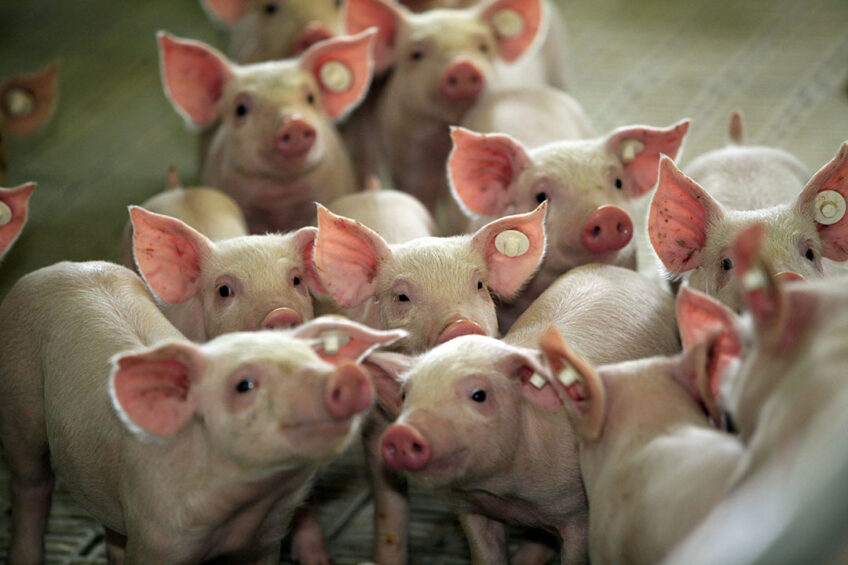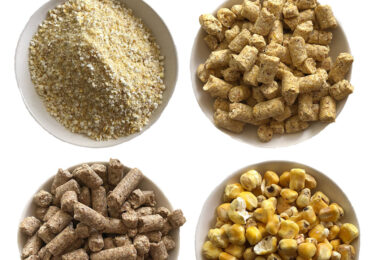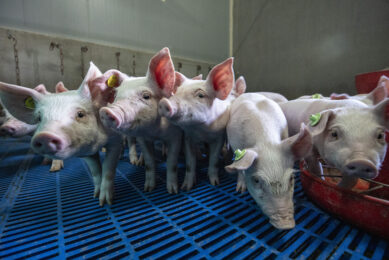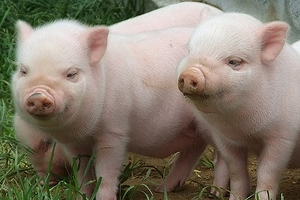Top 5 strategies for getting weaned pigs started on feed

Feeding strategies for weaned pigs should be evaluated on a regular basis to ensure better results.
Areas that should be evaluated include: greater liveability, less morbidity, enhanced labour efficiency, greater weight gains, improved feed efficiency, greater percentage of full-value pigs, heavier carcass weight, and increased financial performance. Considering the following strategies will set weaned pigs for a good start on feed.
 Consider quantification methods
Consider quantification methods
A typical method used in the swine industry to start pigs on feed are subjective indicators such as body condition score. More often these indicators are observed and monitored but not quantified. It is recommended to apply quantification methods. Studies showed that weight gain during the first week post-weaning will help pigs to get a better start on feed. Therefore, it is suggested to select random samples of pig weight by individually tagging and weighing about 100 pigs (5 pigs from about 20 pens). In the next step, determine weight distribution and mean of the data to see if 80% of the pigs gained over 2 lbs. for the first week. This method will provide a general idea of how the system is working in a particular swine farm.
 Change the way of presenting feed to pigs
Change the way of presenting feed to pigs
Feed presentation to pigs is important for early intake, and feed is best offered on trays on a flat surface or in a specialist bowl, away from the dunging area when sows are feeding, as this is when the pigs will be most active and at their hungriest. It is suggested to start with a small quantity but high energy, protein rich, fresh, palatable rations and add feed supplements such as organic acids, essential oils, probiotics, and enzymes to improve digestion and gut integrity.
 Alter the diet gradually
Alter the diet gradually
Weaning is a stressful event in a pig’s life and any sudden changes in the diet will reduce pig performance. Therefore, feed intake in the first few days post-weaning is critical. It is necessary to change the diet gradually and to offer the same diet as fed pre-weaning for approximately a week to provide some constancy and to mimic the nutrition that piglet gained at suckling. Post-weaning ration should be revised up to 3 times over the course of the weaner phase depending on individual systems, such as the genetic leanness of the breed, environment, feed-consumption patterns, and carcass characteristics. Furthermore, feeding milk replacer for a short period post-weaning can improve pig growth and gut health. As the pig grows, more raw cereals and vegetable proteins will be added to meet the digestive enzyme development of the pig.
 Provide proper water supply
Provide proper water supply
Lack of proper water intake is the number one limiting factor to feed intake; therefore, a good supply of clean, fresh water is essential. Newly weaned pigs dehydrate rapidly and need ready access to drinking water. Proper positioning and sanitation of watering devices (either nipple or bowl drinkers) are essential elements of proper pig hydration.
 Pay attention to pigs’ social interaction
Pay attention to pigs’ social interaction
Social interaction between pigs while eating is critical to develop feeding behaviour. Feeders with solid partitions prevent pigs from seeing each other while eating. A properly designed feeder without solid partitions encourages proper social interaction, maximises feed intake, and prevents small pigs from lying and defecating in the feeders. In addition, feeding mats can be used to facilitate social interaction during feeding for the first few days post-weaning. However, mats can lead to higher levels of feed wastage and disease risk from improper sanitation if kept in the nursery pens too long.










